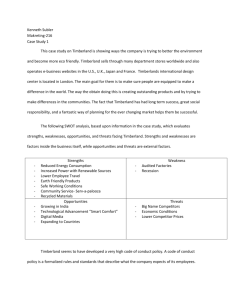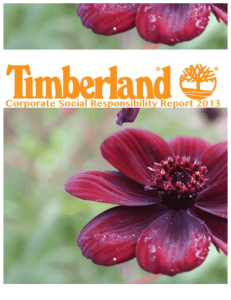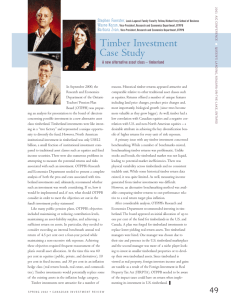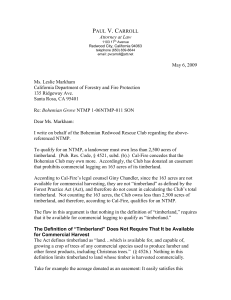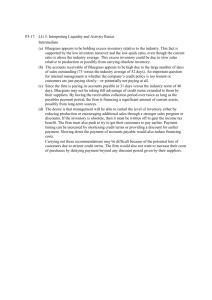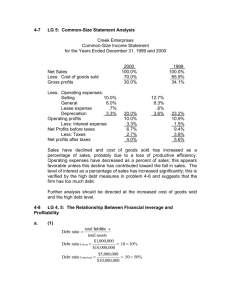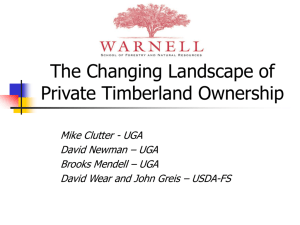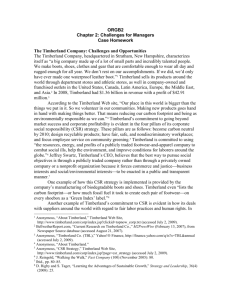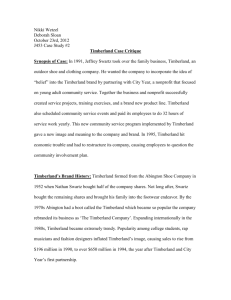Case Study: Timberland The Timberland Company, known for its
advertisement
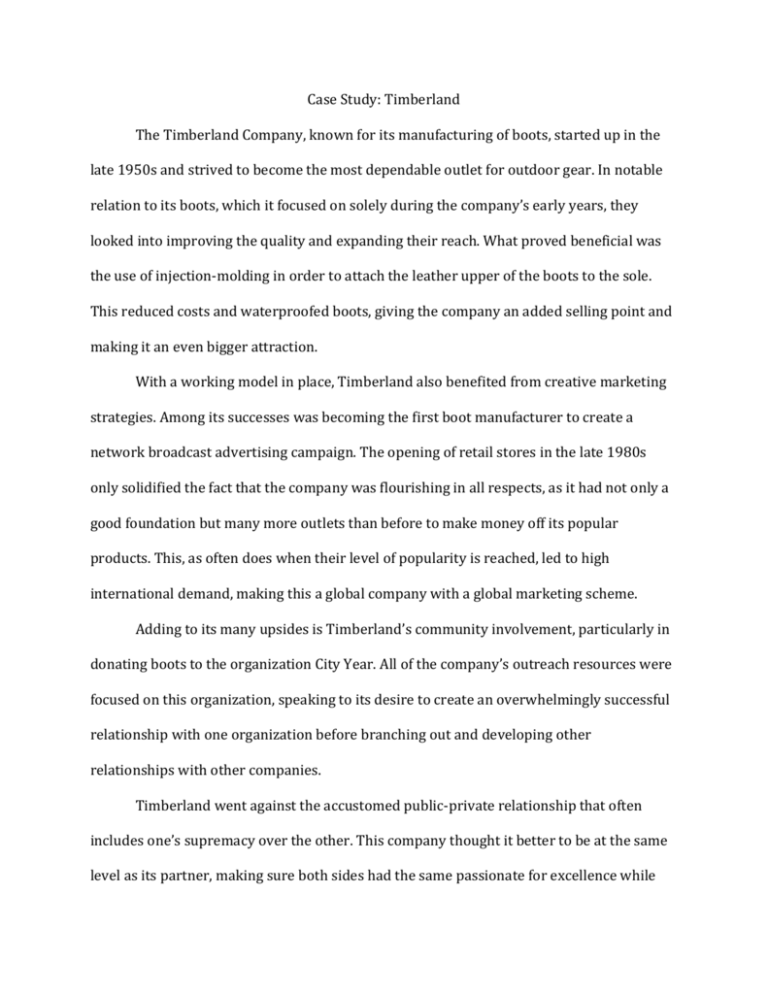
Case Study: Timberland The Timberland Company, known for its manufacturing of boots, started up in the late 1950s and strived to become the most dependable outlet for outdoor gear. In notable relation to its boots, which it focused on solely during the company’s early years, they looked into improving the quality and expanding their reach. What proved beneficial was the use of injection-­‐molding in order to attach the leather upper of the boots to the sole. This reduced costs and waterproofed boots, giving the company an added selling point and making it an even bigger attraction. With a working model in place, Timberland also benefited from creative marketing strategies. Among its successes was becoming the first boot manufacturer to create a network broadcast advertising campaign. The opening of retail stores in the late 1980s only solidified the fact that the company was flourishing in all respects, as it had not only a good foundation but many more outlets than before to make money off its popular products. This, as often does when their level of popularity is reached, led to high international demand, making this a global company with a global marketing scheme. Adding to its many upsides is Timberland’s community involvement, particularly in donating boots to the organization City Year. All of the company’s outreach resources were focused on this organization, speaking to its desire to create an overwhelmingly successful relationship with one organization before branching out and developing other relationships with other companies. Timberland went against the accustomed public-­‐private relationship that often includes one’s supremacy over the other. This company thought it better to be at the same level as its partner, making sure both sides had the same passionate for excellence while striving to do better with more and more powerful notions on how the relationship can strategically work and be a prolonged, satisfying, and efficient one. If one side, Timberland believed, had infused more passion and effort into the relationship and its model and mentality, then the partnership could not be beneficial for both sides. This is all well and good, but challenges came about when considering a for-­‐profit company was intertwined with a non-­‐profit company. That there is this monumental difference between the two, they stuck by congruent values and, in some respects, congruent agendas. Looking at the different environments in which Timberland and City Year operate is key to understanding why they clashed. Among the reasons why they butted heads was City Year’s inability to show Timberland they were valuable separate entities. In addition, City Year’s belief that capitalism could inform social justice only complicated matters, as that was not something Timberland lived by as they tried to convince their collaborating company. The two companies tried to put aside their differences in meeting and focus on the aspects of the partnership that could provide lasting mutual benefit. In doing so, they looked to integrate clearer intertwined visions of organizational thinking into their working model. As a result, there was a joint-­‐agreement to make a City Year-­‐Timberland product line—taking the next and most pivotal step in assuming this relationship. The merged companies sat down to go over product designs and avenues of merchandising. Solidifying what had just been created was City Gear’s training of all personnel in regards to what the merged companies stand for. This led to increased promotion and further respect from a growing customer base. Thought success was prevalent, there was a significant hitch in the road in 1995, as Timberland experienced losses while Congress proposed to eliminate the AmeriCorps program the merged companies looked to for flourishing success and, if times were tough, survival. Timberland was forced to lay off workers. This had a domino effect, as both Timberland and City Year began to be viewed in a negative light. Worse yet, while Timberland was hurting, City Year was still making profit. City Year, as a result, was viewed negatively by some—a backlash that had to be managed carefully. There was so much resentment towards City Year, but the tension simmered down due to a renovation project and its overall effort in the realm of community service. And Timberland took a step back to realize all of the good they were doing, and its employees saw what made their jobs so fulfilling. Amidst the challenges Timberland has faced as a company and with City Year, they put out dependable, popular products and are all in all successful in how they run their company. What is exemplified in all that has taken place with Timberland and its relationship with City Year is what has the tendency to go wrong and right with a company. In concluding the synopsis of this study, it is imperative to focus on Nathan Swartz, a member of the family who originated Timberland. He has a glass half full attitude and acknowledges all that has worked for Timberland. “As tough and as rigorous as it has been, the connection with who we are and what we are reinforced what we had to do. We faced difficult decisions, satisficing decisions, not long-­‐tern I-­‐feel-­‐great decisions. And we made them and stayed together, and we are still staying together in spite of all the bangs and pushes.”
